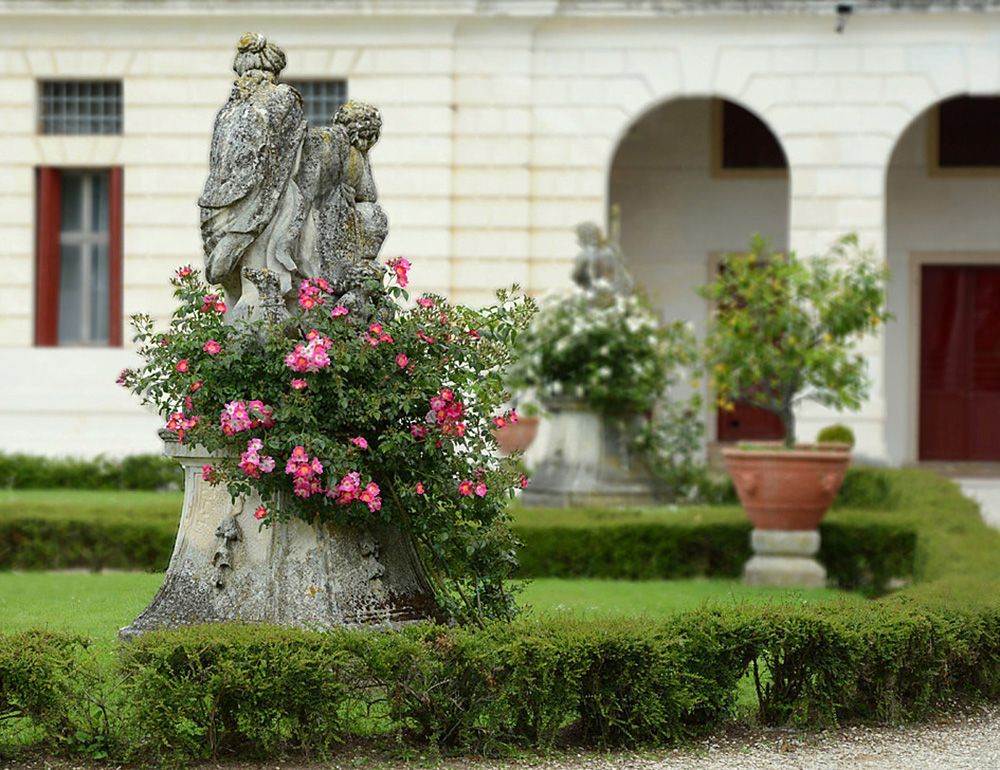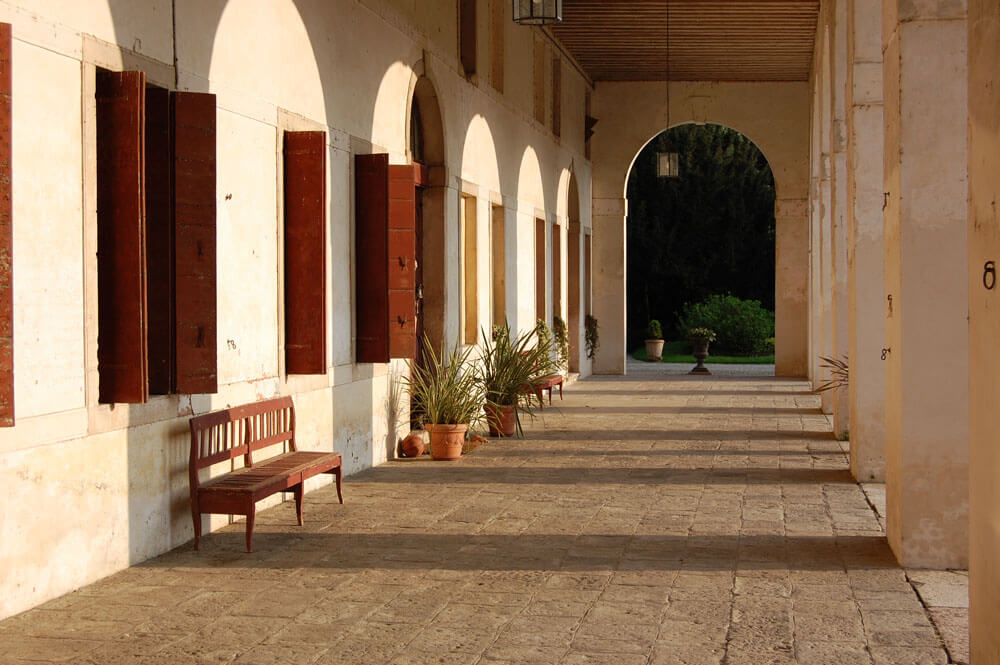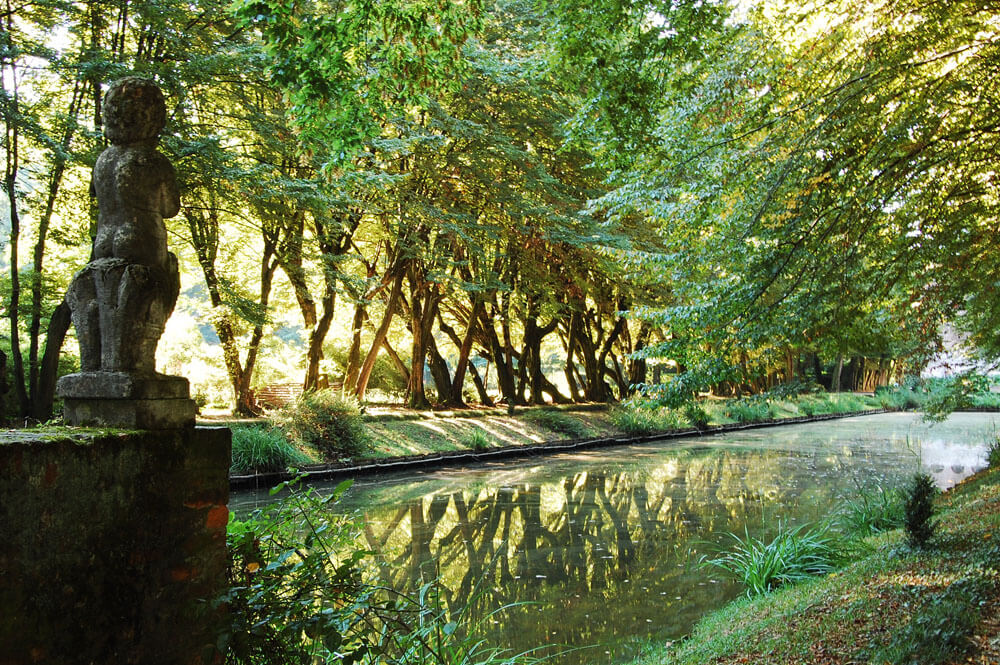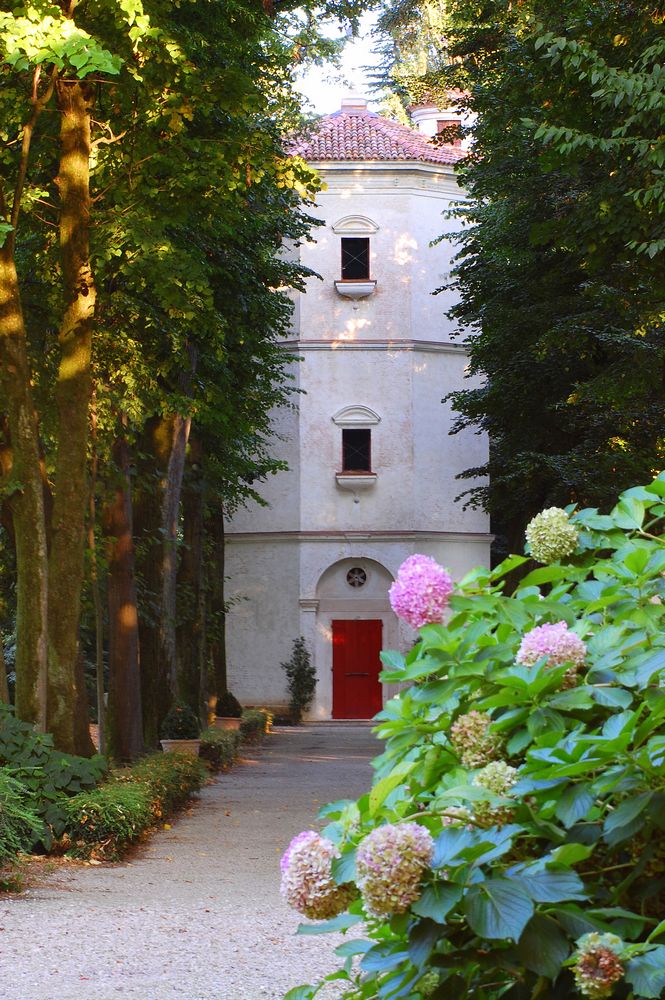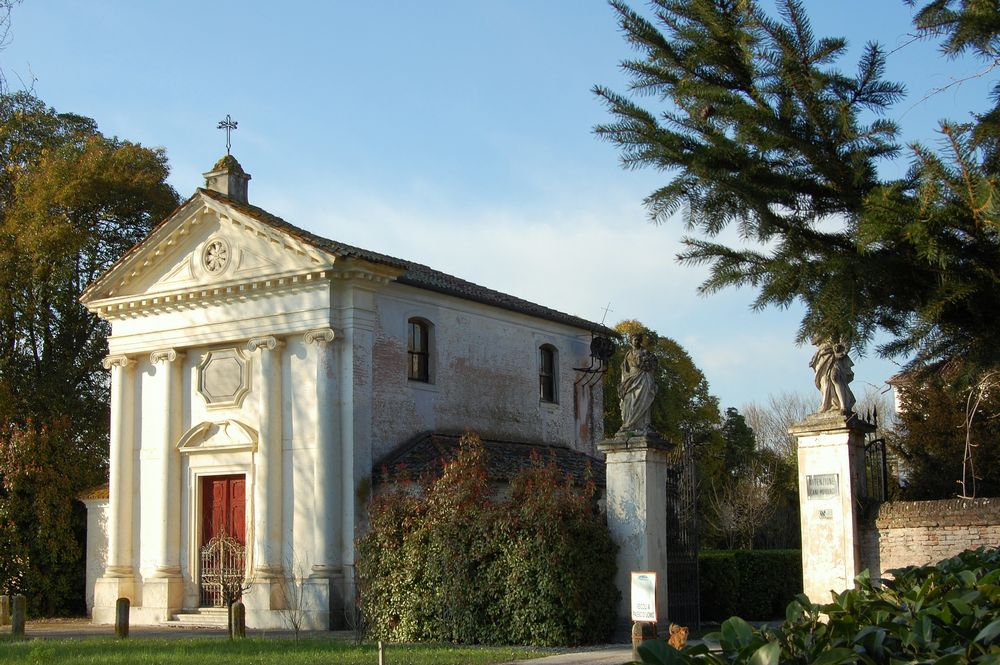Functional architectures
Venetian Villas parks and gardens | Ca’ Marcello
The park of Ca’ Marcello is an excellent example of the Venetian Villa’s typical landscape architecture. The main function of gardens, orchards and parks of the villas were to help self-sufficient daily life inside the property.
Elements such as fish ponds, dovecotes, kitchen gardens and orchards allowed to produce and store varied and fresh food at hand and the barchesse, unmistakable arcaded buildings, contained the products of agriculture, real ‘engine’ of the Venetian Villa.
The usefulness was the basis of all choices in gardens and parks design, in which the beauty gave overall balance and harmony with the residential main body.
Arcaded wings – Barchesse
The barchesse are an architectural element that characterizes almost all of the Venetian Villas, located beside the main house or as stand-alone buildings.
Those of Ca’ Marcello are remarkable structures with rounded arches, placed ahead of the front of the villa. They are composed of different areas related to the agricultural activities of the past, like the mezzà (the farm’s management and administration office), the cellar, the stable and the granaries.
Fish pond – Peschiera
Originally this place was the pit for the extraction of sand and clay needed to the creation of the bricks for the house. At the end of the building process, the pit was filled with water thanks to an aquifer and converted into a fishpond, helping to ensure the self-subsistence of the villa. Even today, the fishpond is populated by different species of fish, visible walking along its banks.
Visit the gardens and the main house
Dovecote
The dovecote is a building dated back to the half of the sixteenth century, the construction period of the original housing unit.
It was used for the breeding of of a local species of pigeons, a delicious ingredient in the traditional recipes. but also an important means of communication for the correspondence between the mainland and Venice.
Another function of the dovecote was, between 1700 and 1900, the breeding of silkworms for silk production, necessary for the realization of the curtains, bed linen and other artifacts of the villa.
Private chapel
The private chapel, dating back to 1753 and dedicated to the Transfiguration of Jesus, has a façade similar to the villa, with half columns with Ionic capitals and a tympanum with denticulate frame. The building houses the family graves and still welcomes the main celebrations dedicated to the Marcellos.



